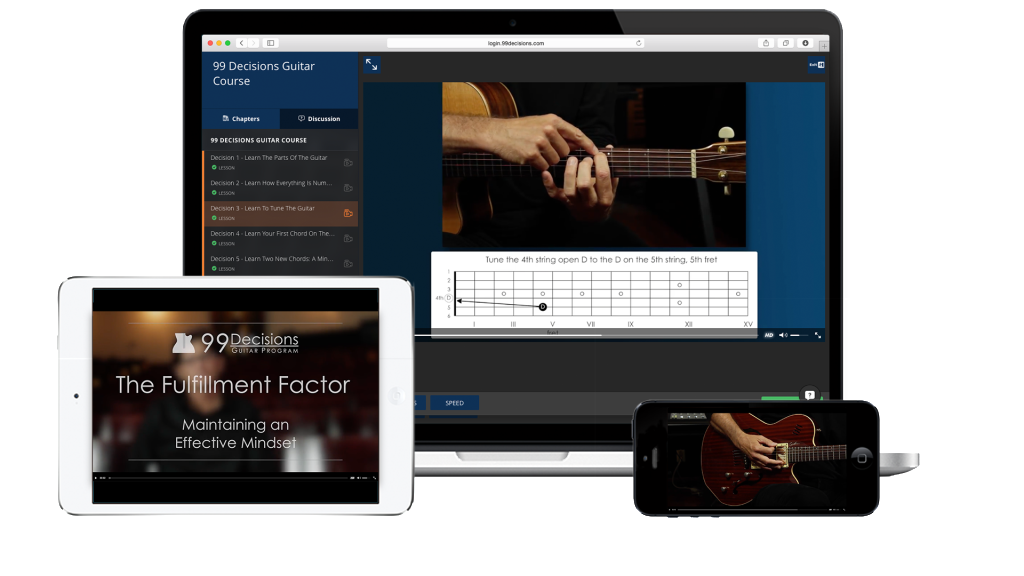Grasping modes is the eternal quest of many guitarists!
They’re an enigma, I tell you!… a seemingly unrealizable body of knowledge that one must search for their whole lives!
How will you disambiguate this elusive construct?!
Ya know what?
They’re just scales… just like the Major Scale, of which you might already be acquainted.
And learning scales is something anyone can do.
But first, let me tell you a little story.
It’s a tale of seven different people with seven different personalities.
And these people?
They work for you. You’re their boss. And if you want them to be productive & get you the results you desire, then you better get to know them personally.
You should know their names (first & last), their birthdays, what their favorite foods are, what their tendencies are in certain situations, how they react with others, what happens when somebody leaves the room, etc.
These people are your team. They will do whatever you say.
As their leader, knowing these particulars about each person will enable you to create a work place that’s effective, productive & beautiful.
But you have to really know them. Because when you can relate to your team members & interact with them on a deeper level, great things will happen.
These seven people are the seven notes of the Major Scale.
They have numbers: 1 2 3 4 5 6 7
They have names: a letter (A B C D E F G), and maybe a sharp (#) or a flat (b)
If you call them the wrong name… or if you say, “Hey you!… the guy sitting on the 5th string at the 4th fret… what’s you name again?”, then their feelings will be hurt and then these notes won’t want to work for you anymore & you will cease to be able to effectively manage them and then your desires will not be met.
Oh, you might meet your objectives for the day. But then again, you might not. Because you will not be in control of your team.
Or, you might put one team member on a project with two other team members and the three of them don’t really get along so well. They don’t play nice.
Then what happens? They produce less than optimal results.
Have I gotten my money’s worth out of this analogy yet?
I can go on.
This is a fantastic way to relate to what you are doing when you create art with scales.
scale = team
individual notes = team members
music theory = particulars, personalities
artist = you, the boss, the leader
art = results, project, work place
Being in control of your scale vocabulary is extremely important in getting to the place where you can create art freely & expressively.
Okay, this article is about modes, so why have I only mentioned the Major Scale?
Well, the Major Scale is one of the seven modes. Did you know that? Maybe you did. Or maybe you didn’t. That’s okay.
I LOVE it when people are crying because they think they don’t know any modes and I then say, “Do you know the major scale?”, and they whimper & sniff, “Yes”, and I say, “AHA! The Major Scale is indeed one of the seven modes. It is the Ionian Mode.” Then they stop crying and everyone is happy again.
That doesn’t literally happen. The crying, I mean.
But the point is- you definitely want to know that the Major Scale is also known as the Ionian Mode. This scale has two names & you need to know both of them.
Now that we’ve cleared that up, here are all seven modes…
Ionian (the Major Scale)
Dorian
Phrygian
Lydian
Mixolydian
Aeolian
Locrian
Each of these modes should be considered to be a different “team” of “members”.
Each mode has seven notes in it… the seven “members”.
You use the different modes to achieve different sounds in your music. And by “sounds”, I mean qualities, flavors, colors, emotions, moods…
Yes! Moods = modes! Ah, behold the clever word play. (actually, that is where the word modes comes from)
These terms refer to that fact that some of the modes are of a major quality, some are a minor quality, one is dominant 7th flavored.
More on this later.
Trust me, I’ve been doing this for a long time & I could write my doctoral thesis (and I just might) on the subject of how discombobulated guitarists get on the subject of modes. There are a handful of reasons why guitarists so commonly end up with either a tenuous grasp of modes & how to use them, or, somewhat worse, they think they do understand them and proceed to use them haphazardly.
I thought it best to introduce this subject in a non-conventional way… that is, by setting you up with the most effective cognition before diving into
the music theory, formulas & scale patterns of all the modes. And we’re also going to get into some deep listening skills so you develop an intimate relationship with each mode & it’s true disposition.
Heads up!
You’re going to have to do a few things before you proceed on your journey of understanding modes.
(yeah, I’m mixing a lot of metaphors & analogies here, I know)
You are going to have to get a basic understand of music theory fundamentals.
And you are going to have to know the names of the notes on the fretboard.
(Have I mentioned that the 99 Decisions Guitar Course has an excellent method for learning the notes on the fretboard?)
Once you do this, you will have what you need to successfully learn & master modes and be able to use them in your playing in a way that is liberating & creative.
In future posts, I will address more specifics & particulars that will guide you on your path to mode mastery.
Until then, forge ahead, grasshopper!
(WordPress has just informed me that I have exceeded my allotted number of metaphors)



Leave A Response